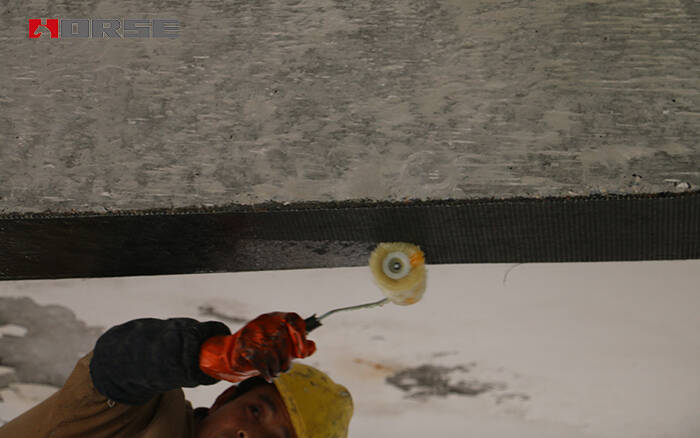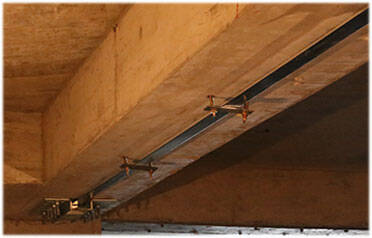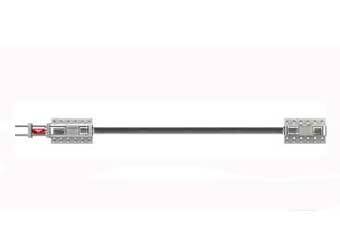Solutions
Horse Construction offers full range of structural strengthening materials with technical supports, documentation supports, products supports, project supports.
Some new methods of carbon fiber materials for structural reinforcement

Carbon fiber materials have the characteristics of corrosion resistance, high strength, light weight and non-magnetic properties. The use of carbon fiber materials for structural strengthening has been more and more widely used in recent years. This method has the advantages of good durability, convenient construction, no increase in cross section, no increase in load, and beautiful appearance. Pasting carbon fiber material to the bending member can improve its bending and shear resistance. Pasting carbon fiber materials to the frame nodes and columns can improve its seismic resistance. The research on the use of carbon fiber materials to repair concrete structures has been relatively mature and has been widely used in the reinforcement of various concrete components.
1. Prestressed carbon fiber cloth reinforcement technology
Although carbon fiber is a high-strength material, its elastic modulus is much smaller than its strength. When working with steel bars, when the steel bar fully exerts its strength, the carbon fiber does not deform too much, and exhibits less than 20% of its strength, which has very limited effect on improving the cracking load and yield load of the component. It is difficult to suppress the deformation of the component and the development of cracks, and it is difficult to increase the stiffness of the component. Therefore, to play the role of high strength of carbon fiber reinforced materials, the carbon fiber material must first be deformed enough, and the carbon fiber material can be pre-tensioned and then used for reinforcement.
The construction machinery that uses prestressed carbon fiber cloth to reinforce concrete structures must have the following properties: it can effectively stretch the carbon fiber cloth. The device used for anchoring the carbon fiber cloth should have a strong anchoring ability to stretch the carbon fiber cloth to a higher stress level, and the anchoring device and the machine itself must have greater rigidity. In order to ensure that large deformation does not occur when bearing a large external force, the cross-sectional stress distribution of the carbon fiber cloth is uneven and it is broken prematurely. After the tension is completed, it should be convenient to paste and strengthen the bending members. Easy to transport and install.
2. Hybrid fiber materials for reinforcement
Experiment of using carbon fiber cloth and high-strength glass fiber cloth to strengthen concrete square columns. In the experiment, the hybrid fiber reinforcement adopts the interlayer hybrid method. The carbon fiber cloth is arranged on the inner side and the high-strength glass fiber cloth is on the outside. This can take advantage of the carbon fiber's good alkali resistance and high glass fiber elongation. The test results show that carbon fiber can effectively improve the performance efficiency of glass fiber. The use of hybrid fiber reinforcement can not only improve the ductility of the component, but also reduce the cost of reinforcement while ensuring the bearing capacity of the component, with only a slight decrease in stiffness.
The hybrid reinforcement method of carbon fiber and high-strength fiber was used to reinforce the beams with abnormal cracks in a library. The reinforcement results show that this method improves the ductility of the members and reduces the reinforcement cost.

3. Carbon fiber plate reinforced concrete structure
When it is necessary to increase the large bearing capacity of the component, the surface of the component can be pasted with multiple layers of carbon fiber cloth for reinforcement, but the carbon fiber plate can also be used to strengthen the component. Using carbon fiber plate for reinforcement is faster and more convenient than pasting multi-layer carbon fiber cloth reinforcement, and it reduces the process of bonding between cloth and cloth. The carbon fiber plate reinforcement method is basically the same as the carbon fiber cloth reinforcement method.
The method of pasting carbon fiber plate for reinforcement is more convenient and quick, which can effectively improve the bearing capacity and deformation stiffness of reinforced concrete members, and can make the distribution of beam cracks fine and dense. The reinforcement effect mainly depends on the bonding between the carbon fiber plate and the concrete interface. Ensuring the bond strength and end anchoring measures are the prerequisites for the carbon fiber plate to fully function.
4. Carbon fiber material reinforcement and repair of steel structure
High-strength, low-weight, and corrosion-resistant carbon fiber reinforced steel structures have obvious advantages. The process of pasting carbon fiber materials is basically the same as that of pasting on concrete, but the following issues still need attention:
1) In order to obtain the best repair effect, the fiber direction (main axis direction) of the pasted carbon fiber material should be as consistent as possible with the maximum force direction in the damaged component. If the damaged part is in a complex stress state, the fiber orientation and layering sequence should be as consistent as possible with the controlled stress direction.
2) After the carbon fiber material is pasted, the surface protection treatment should be carried out according to the actual situation, such as spraying anti-rust paint, fireproof coating and decorative materials, etc., and the reliable bonding between the protective material and the carbon fiber material should be ensured.
3) Both steel and carbon fiber materials are conductive materials and have good conductivity. However, when the surface of the repaired component is in a corrosive environment, galvanic corrosion is prone to cause corrosion of the steel structure. Therefore, when using carbon fiber to repair and strengthen steel components, special care should be taken to prevent the repaired parts from being in a corrosive environment.
5. Reinforce masonry walls with carbon fiber cloth
The application of carbon fiber cloth in brick masonry structures, in addition to preventing and repairing cracked walls, is to use the high-strength and efficient mechanical properties of carbon fiber cloth to improve the seismic performance of brick masonry structures. The ultimate load of the cracked wall reinforced with carbon fiber cloth is significantly higher than that of the unreinforced wall; the deformation capacity of the reinforced wall is also significantly improved. When carbon fiber cloth is used to reinforce brick walls, the larger the width of the cloth, the more obvious its reinforcing effect.
You can find anything here you are in need of, have a trust trying on these products, you will find the big difference after that.

High strength carbon fiber reinforced polymer (CFRP) strip / laminate / plate for structural strengthening and concrete repair

Prestressed carbon fiber reinforced polymer(CFRP) plate for slab, beam strengthening to increase stiffness, reduce distortion and deflection of members, reduce the cracks, avoid and stop cracking.

High strength, unidirectional carbon fiber sheet pre-saturated to form a carbon fiber reinforced polymer (CFRP) sheet used to strengthen structural concrete elements.